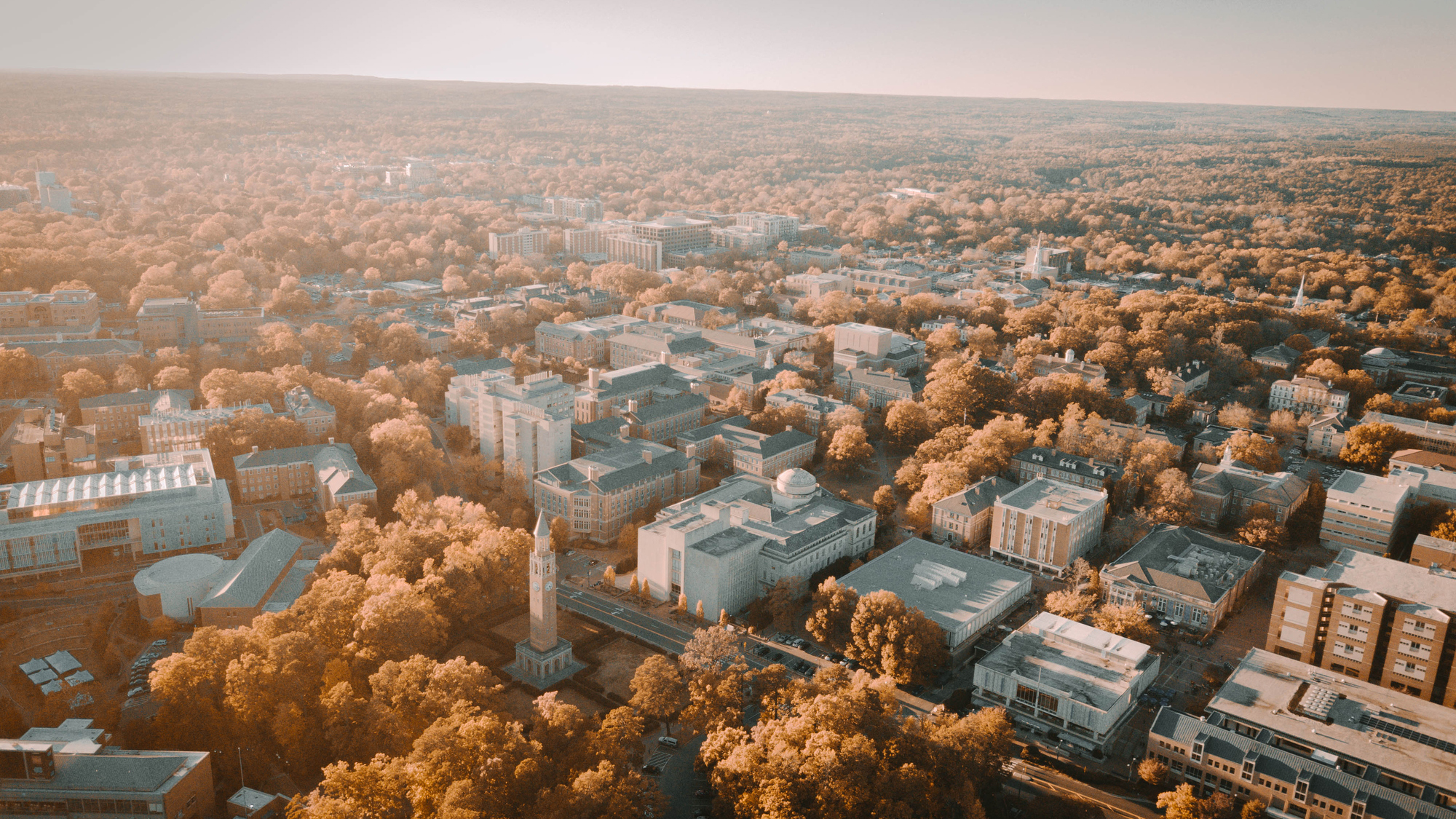Where Was Capital City Community College in Little Rock
A college town is a location heavily influenced by the presence of higher education institutions. Students typically make up a large portion of a college town's population, and the resident universities significantly impact local economics, culture, and social life. College towns attract prospective students because they offer countless activities, a pervasive sense of school spirit, and young populations.
This ranking covers 10 of the best college towns in America. Students flock to each of these places to experience arts and culture, outdoor recreation, bustling social scenes and nightlife, and rich internship and career opportunities.
Top U.S. College Towns
Gainesville, FL | Ithaca, NY | Madison, WI | Chapel Hill, NC | Boston, MA | Ann Arbor, MI | Corvallis, OR | Austin, TX | Boulder, CO | Amherst, MA
Read more about these towns
Qualities of Great College Culture
College towns share similar characteristics driven by the presence of local colleges and universities. These locations typically foster a well-educated population, healthy local economies, vibrant art and music scenes, and engaging sporting events. Also, the quality of healthcare in college towns often surpasses that of many other locations.
A college town's diverse qualities benefit local citizens and enrolled students, whether they live on or off campus. In some cases, learners may even decide to make their college town their permanent home after graduation.
Discover 10 great college towns across America in our rankings list below.
Find your fit for the best college lifestyle:
The Best College and University Towns
To develop the following list of the 10 best college towns in America, we considered three primary factors for each location: median age, unemployment rate, and cost of living. Secondary ranking factors included walkability and/or public transit scores, diversity and inclusion, and the variety of local attractions, events, and recreation options.
Sean Pavone / iStock / Getty Images Plus
Gainesville, FL
| Population | 133,997 |
|---|---|
| Share of Population in College | 64.75% |
| Number of Institutions | 7 |
| Median Age | 31.3 |
| Unemployment Rate | 4% |
The University of Florida — the nation's fifth-largest public university by enrollment — calls Gainesville home. On campus, students enjoy sunbathing in year-round sunshine, tailgating, and taking advantage of networking and social opportunities, but Gator Nation pride can be felt throughout the Gainesville area.
The city boasts many outdoor recreation opportunities for hikers, swimmers, and nature lovers. Favorite local spots include La Chua Trail, Ginnie Springs, Sweetwater Wetlands Park, and the Carson Springs Wildlife Conservation Foundation, where facilities house endangered species and big cats rescued from the zoo and pet trades.
Arts, history, culture, and entertainment abound in North Central Florida. Notable attractions include the annual downtown festival and art show, the Florida Museum of Natural History, and Butler Plaza. Located just a mile from the UF campus, the retail plaza includes grocery stores, a movie theater, specialty shops, and dozens of dining options.

Bruce Yuanyue Bi / The Image Bank / Getty Images
Ithaca, NY
| Population | 30,837 |
|---|---|
| Share of Population in College | 76.26% |
| Number of Institutions | 2 |
| Median Age | 30.9 |
| Unemployment Rate | 4.2% |
With a population of just over 30,000, Ithaca is the smallest contender on our list of the best college towns in America. Home to Ithaca College and Cornell University, the town stands out as a major educational center in the region. Ithaca boasts both a high walkability score and a lower-than-average cost of living.
Natural beauty abounds in Ithaca, with dense forests, waterfalls, and picturesque gorges carved out by ancient glaciers. Top outdoor attractions include Cayuga Lake, Robert Treman State Park, and Cascadilla Gorge Trail. The Cornell campus boasts a 150-acre botanical garden, ornithology lab and nature area, and art museum.
Ithaca and Tompkins County foster an inclusive environment for LGBTQ people and families. Many community businesses, including shops, restaurants, and nightlife establishments, bear inclusive space decals on their windows. These establishments offer a student-oriented retail and bar scene to serve the extensive college population.

halbergman / E+ / Getty Images
Madison, WI
| Population | 259,680 |
|---|---|
| Share of Population in College | 55.34% |
| Number of Institutions | 8 |
| Median Age | 34.9 |
| Unemployment Rate | 3.3% |
Although Madison is home to more than half a dozen higher education institutions, the University of Wisconsin Madison sets the tone for this major Midwest college town. The UW Badgers live and learn on the shores of Lake Mendota, on a 936-acre campus that blends seamlessly with the city around it.
The state capital offers diverse recreation activities, including monuments and museums, water sports across five lakes, and an active retail and nightlife scene. In the summer, Madison is a rich cultural destination with events including Opera in the Park and concerts on the rooftop of Monona Terrace.
Almost half of UW alumni call Wisconsin home. Madison also boasts the lowest local unemployment rate on this ranked list. College graduates frequently secure jobs in Madison's top economic sectors, including biotechnology, digital technology, food processing, healthcare, and manufacturing.

Ryan Herron / E+ / Getty Images
Chapel Hill, NC
| Population | 64,051 |
|---|---|
| Share of Population in College | 62.8% |
| Number of Institutions | 2 |
| Median Age | 34.7 |
| Unemployment Rate | 3.5% |
One of the best college towns in the Southeast, Chapel Hill supports a population of over 64,000 residents, more than half of whom are students. The town's economy relies heavily on the University of North Carolina Chapel Hill and the UNC Health system.
Though it holds the lowest walkability score on our list, Chapel Hill offers free public transportation that connects the Carolina campus to other parts of town, including local parks and shopping centers. Chapel Hill boasts no shortage of entertainment and recreation options, including a historic movie theater, an annual art fair each October, and several greenways and walking trails.
Chapel Hill embraces its college town identity in unique ways, like fire trucks with a Tar Heel blue paint job. With a low 3.8% unemployment rate, it comes as no surprise that some Carolina students decide to stay in Chapel Hill after graduation.

joe daniel price / Moment / Getty Images
Boston, MA
| Population | 692,600 |
|---|---|
| Share of Population in College | 47.61% |
| Number of Institutions | 26 |
| Median Age | 32.7 |
| Unemployment Rate | 5.4% |
One of the biggest college towns in America, Boston supports more than two dozen degree-granting institutions, including the Massachusetts Institute of Technology, Harvard University, Tufts University, and Berklee College of Music. Rather than a small-town feel, Boston offers a sprawling urban environment rich with history and opportunity.
Highlights of the city include Boston Common, the nation's first public park; Faneuil Hall's hundreds of shops and restaurants; and dozens of art, history, and science museums. Like other big cities in the U.S., Boston hosts several major events each year, including the Boston Marathon, Boston Pops July 4th spectacular, and Boston Pride parade.
A pedestrian's paradise, Boston is extremely walkable, bikeable, and accessible on public transit subway lines, commuter rail, and bus routes. College students enjoy extensive internship and career opportunities, four distinct seasons, vibrant nightlife, and world-class sporting events.

DenisTangneyJr / iStock / Getty Images Plus
Ann Arbor, MI
| Population | 119,980 |
|---|---|
| Share of Population in College | 63.64% |
| Number of Institutions | 3 |
| Median Age | 33.4 |
| Unemployment Rate | 4.0% |
Like most college towns, Ann Arbor's economy relies heavily on its resident higher education institutions. The University of Michigan and its medical center employ nearly 30,000 workers, making it one of the state's top five employers. U-M's extensive research and development contributions help foster an attractive environment for biotechnology and IT companies.
Ann Arbor boasts a world-class visual and performing arts scene on and off the U-M campus. Diverse museums, art galleries and collections, theatrical performances, and independent bookstores enrich the lives of college students and permanent residents alike. Retail, dining, and outdoor recreation opportunities also abound.
U-M's rich athletics tradition pervades the city. Locals regularly flock to Yost Arena, the Crisler Center, and Michigan Stadium — the largest stadium in North America — to watch the Wolverines play hockey, basketball, and football.

David Bassett / Photodisc / Getty Images
Corvallis, OR
| Population | 58,856 |
|---|---|
| Share of Population in College | 62.62% |
| Number of Institutions | 1 |
| Median Age | 32.9 |
| Unemployment Rate | 4.6% |
Oregon State University operates satellites in every Oregon county, but its main campus sits at the center of the bustling college town of Corvallis. Small and tight knit, Corvallis supports many unique small businesses, including restaurants, breweries, shops, and an independently owned movie theater focused on indie and art films.
The Pacific Northwest environment surrounding Corvallis enables Oregon State to offer top programs in forestry and oceanography. Residents can take advantage of nearby natural areas and wildlife refuges for outdoor activities like hiking, hunting, fishing, and bird watching. Sports fans engage with Beavers athletics, including baseball, basketball, football, and rowing.
The League of American Bicyclists considers Corvallis a Gold Level Bicycle Friendly Community. The town also offers free public transit, making it easy for students and other residents to enjoy the town's many murals, public art installations, and monthly downtown art walks.

Peter Tsai Photography – www.petertsaiphotography.com / Moment / Getty Images
Austin, TX
| Population | 978,908 |
|---|---|
| Share of Population in College | 38.37% |
| Number of Institutions | 10 |
| Median Age | 33.9 |
| Unemployment Rate | 4.5% |
One of the best college towns in America is also one of the largest. College students make up 38% of Austin's nearly one million residents. Major institutions in the Austin metro area include the University of Texas at Austin, St. Edward's University, and Concordia University Texas.
As its motto "Keep Austin Weird" suggests, the diverse capital city offers something for everyone. For outdoor enthusiasts, Austin boasts many parks, green spaces, and the natural Barton Springs. College students particularly enjoy Austin's vibrant live music scene, 1,200 food trucks, and pedestrian-only access to 6th Street's bars and restaurants each weekend.
The city of Austin is somewhat synonymous with burnt orange and white, the colors of UT. The Texas Longhorns boast one of the top football programs in the state. Other varsity athletic programs include baseball, men's and women's basketball, and men's and women's golf.

espiegle / iStock / Getty Images Plus
Boulder, CO
| Population | 105,673 |
|---|---|
| Share of Population in College | 62.07% |
| Number of Institutions | 4 |
| Median Age | 36.2 |
| Unemployment Rate | 5.3% |
Boulder earns its place among the best college towns in America, despite its relatively high cost of living. Home to the University of Colorado Boulder, the city features a high level of walking and biking, beautiful scenery, and a thriving culture of innovation.
An outdoor lover's paradise, Boulder offers easy access to nearby ski resorts, mountain biking trails, and several national and state parks. For the less adventurous, Boulder also maintains several city parks, indoor recreation centers, and a reservoir ideal for picnicking, fishing, and swimming.
Together, CU Boulder and the city of Boulder help foster a strong culture of technology and innovation. College students can take advantage of internships in major sectors like aerospace, bioscience, cleantech, and IT. Some learners even choose to stay in Boulder after graduation to grow in their careers.

DenisTangneyJr / iStock / Getty Images Plus
Amherst, MA
| Population | 39,924 |
|---|---|
| Share of Population in College | 80.65% |
| Number of Institutions | 3 |
| Median Age | 36.6 |
| Unemployment Rate | 6.9% |
Nestled in the Connecticut River valley, Amherst hosts three top schools: Amherst College, Hampshire College, and the University of Massachusetts-Amherst, the largest campus in the UMass system. It maintains a relatively low cost of living and is widely considered one of the best college towns in the Northeast.
Historically associated with the poets Emily Dickinson and Robert Frost, Amherst continues to foster a thriving arts scene with several museums, an independent cinema, and a downtown dance studio. Breathtaking natural scenery and walking trails offer no shortage of inspiration for other burgeoning poets in the area.
Amherst residents maintain strong civic engagement efforts, demonstrating high levels of political participation through voting, volunteering, and community meetings. The town also embraces diversity and inclusion. Amherst became a member of the Government Alliance on Race and Equity in 2020.
Check out other colleges by geography:
- Best Western Universities
- Best Southern Universities
- Best Northern Universities
- Best Colleges and Universities for Outdoor Adventurers
- Best Oceanside Colleges
Frequently Asked Questions
-
How many universities are in the U.S.?
According to the National Center for Education Statistics, the U.S. maintains 3,982 degree-granting postsecondary institutions as of 2019-2020. This figure includes two-year, four-year, public, private, nonprofit, and for-profit institutions.
-
What is considered a college town?
A college town is an urban area with a significant population of college students. In college towns, the presence of one or more schools significantly impacts the local economy, culture, business environment, and social life.
-
Are college towns safe?
Every municipality is different, but college towns have a vested interest in keeping students safe while enrolled. Prospective students can look into crime statistics and public safety resources to learn more about a location's safety.
-
What are some of the biggest college towns in America?
Four of the biggest college towns in America include New York, Los Angeles, Chicago, and Boston. Each of these major metropolitan areas supports multiple universities that attract thousands of students every year.
-
What are the best American states and towns to live in?
What makes a state or town "the best" is largely a subjective question. Several priorities may include climate, cost of living, job markets, or recreation activities. College offers students an ideal opportunity to explore new places.
Feature Image: Ryan Herron / iStock / Getty Images Plus
Recommended Reading

Most Affordable Online Law Schools
December 8, 2021 | CollegeChoice.net Staff
A law degree can increase earning potential and career opportunities. Here, we list the best online programs available.

Best Online Colleges and Universities
December 3, 2021 | Staff Writers
According to the , 7,313,623 students enrolled in at least one distance education course at degree-granting postsecondary institutions in fall 2019. The year 2021 is an ideal time to pursue...
Where Was Capital City Community College in Little Rock
Source: https://www.collegechoice.net/college-life/best-college-towns-america/
0 Response to "Where Was Capital City Community College in Little Rock"
ارسال یک نظر